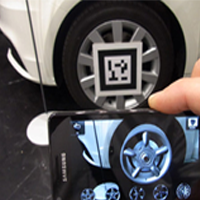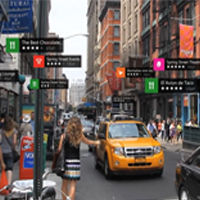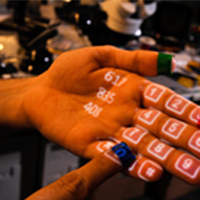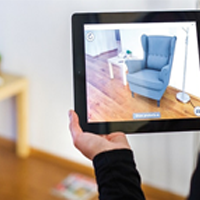
Marker-based augmented reality (also called Image Recognition) uses a camera and some type of visual marker, such as a QR/2D code, to produce a result only when the marker is sensed by a reader. Marker based applications use a camera on the device to distinguish a markerfrom any other real world object. Distinct, but simple patterns (such as a QR code) a re used as the markers, because they can be easily recognized and do not require a lot of processing power to read. The position and orientation is also calculated, in which some type of content and/or information is then overlaied the marker.

As one of the most widely implemented applications of augmented reality, marker less (also called location-based, position-based, or GPS) augmented reality, uses a GPS, digital compass, velocity meter, or accelerometer which is embedded in the device to provide data based on your location. A strong force behind marker less augmented reality technology is the wide availability of smart phones and location detection features they provide. It is most commonly used for mapping directions, finding nearby businesses, and other location-centric mobile applications.

Projection based augmented reality works by projecting artificial light onto real world surfaces. Projection based augmented reality applications allow for human interaction by sending light onto a real world surface and then sensing the human interaction (i.e. touch) of that projected light. Detecting the user’s interaction is done by differentiating between an expected (or known) projection and the altered projection (caused by the user's interaction). Another interesting application of projection based augmented reality utilizes laser plasma technology to project a three-dimensional ( 3D) interactive hologram into mid-air.

Superimposition based augmented reality either partially or fully replaces the original view of an object with a newly augmented view of that same object. In superimposition based augmented reality, object recognition plays a vital role because the application cannot replace the original view with an augmented one if it cannot determine what the object is. A strong consumer-facing example of superimposition based augmented reality could be found in the Ikea augmented reality furniture catalogue. By downloading an app and scanning selected pages in their printed or digital catalogue, users can place virtual ikea furniture in their own home with the help of augmented reality.
has been ranked amongst the prestigious "si50 Fastest Growing Companies - 2014
Read Morehas been ranked amongst the prestigious "si50 Fastest Growing Companies - 2014"
Read More

























